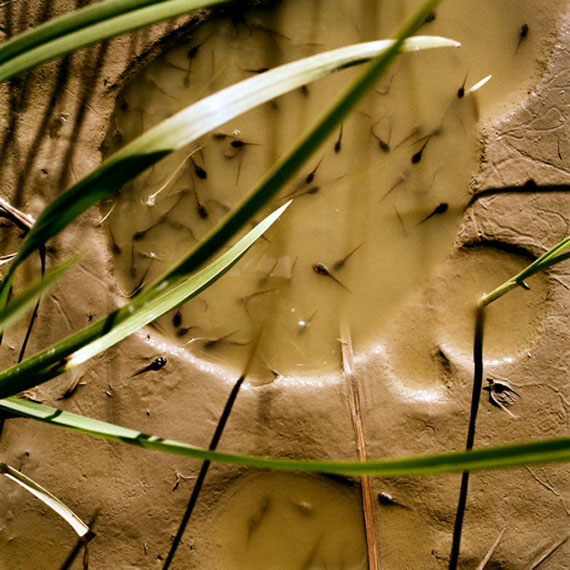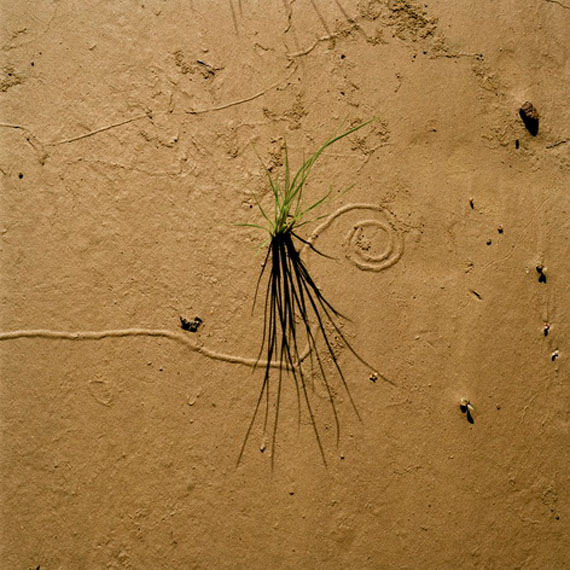
Empreintes / Tierspuren
Alfred Ehrhardt » Normand Rajotte »
Exhibition: 27 Feb – 24 Apr 2016
Fri 26 Feb 19:00
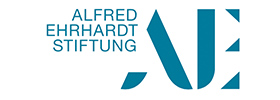
Alfred Ehrhardt Stiftung
Auguststr. 75
10117 Berlin
+49 (0)30-20095333
info@aestiftung.de
www.aestiftung.de
Tue-Sun 11-18
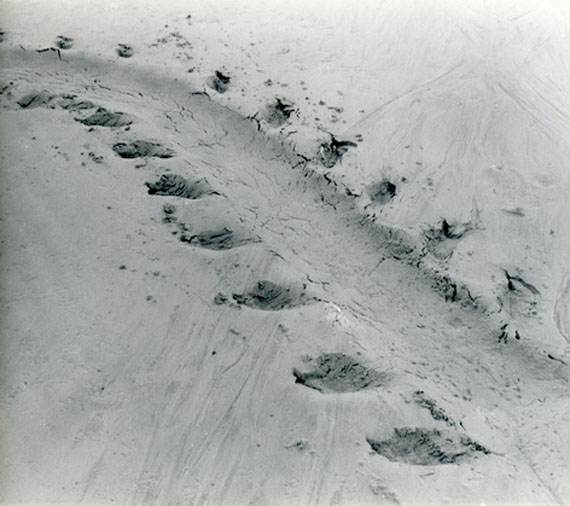
Normand Rajotte: "Empreintes" / Alfred Ehrhardt: "Animal Tracks"
Exhibition: 27 February to 24 April, 2016
Opening: Friday, 26 February, 7pm
Opening Remarks: Dr. Christiane Stahl, Director Alfred Ehrhardt Foundation
Canadian photographer Normand Rajotte has explored the forest region surrounding Mont Mégantic near Québec with his camera for many years. Instead of focusing primarily on the landscape of the forest, he has turned his attention to the ground, where he discovers the tracks made by animals of the forest. The series Comme un murmure (Like a Whisper) attests to this photographer's intimate relationship with nature as it developed over time and his immersion in these surroundings during his wanderings. Particularly his photographs of animal imprints in damp soil recall the little-known photographs taken by Alfred Ehrhardt in the German tidelands from 1933 to 1936 of tracks made by sea animals. The exhibition Normand Rajotte: Empreintes / Alfred Ehrhardt: Animal Tracks is an encounter between the images of Alfred Ehrhardt and Normand Rajotte, who each dedicated their works to the surface structures of the ground and the patterns inscribed there by various forms of animal life.
Both Normand Rajotte and Alfred Ehrhardt are photographers who have explored nature—whether by hiking through the dense forest or crossing the expanse of the tidal flats. With the sharp eye of a tracker they each repeatedly combed the same territory, finding the markings made by animals and following them with their camera, which was pointed to the ground to capture the photographer's discoveries in close-up. In Rajotte's images of the snow, the markings of a bird or the rounds made by a coyote seem almost like drawings. However, he does not always simply capture the physical imprints left by the inhabitants of the woods, but in his images also the branches gnawed by beavers, the tadpoles swimming in muddy water, or the tubular spirals carved into the soil give us indications of the life taking place beneath the forest floor. His precise knowledge of the area gives rise to a sense of immediacy that is expressed in his images and that offers intimate insights into the
natural realm. In Ehrhardt's photographs the rhythmical formations in the tideland sands—created by the alternation of the tides and the tracks of seagulls, seals, or sandworms—sometimes take on a mysterious, abstract quality. The images are defined by Ehrhardt's affinity to the structural studies of New Vision and his sense for composition, materials, and abstraction, which was indebted to his Bauhaus training.
From the very beginning the photograph itself was understood as an index or trace of reality, as an "emanation of past reality" (Roland Barthes). It thus permits things absent to appear present. It refers to something far away that manifests itself in the image and thus seems near. There is a mysterious or even uncanny element to the photograph, and a certain melancholy accompanies the image as a visual memory. Through their photographs Normand Rajotte and Alfred Ehrhardt open up and reveal a visual world that otherwise lies hidden.
NORMAND RAJOTTE began working as a photographer in the mid nineteen-seventies. During this period he was part of a movement in Quebec, which sought to achieve an aesthetic renewal of documentary street photography. Since the early eighties Rajotte has been focusing on landscape and nature photography, with which he has participated in numerous international solo and group exhibitions. Rajotte lives in Montreal and Estrie.
ALFRED EHRHARDT (1901-1984) was an organist, choir director, composer, painter, and art instructor before becoming a photographer. After attending the Bauhaus in Dessau in 1928/29, where he studied with Josef Albers and assisted in the classes of Wassily Kandinsky and Oskar Schlemmer, he assumed responsibility for the first foundation course (»Vorkurs«) for material studies outside of the Bauhaus, at the State Art Academy of Hamburg. After being dismissed from his teaching position by the National Socialists in 1933, he began working in photography and film. In the tidelands off the coast of the islands of Scharhörn and Neuwerk he discovered the unique qualities of the ever-changing landscape of the sea.
The book Comme un murmure / Like a Whisper is published by Kehrer Verlag, with an essay by Alexis Desgagnés, hardcover, 20 x 24 cm, 68 pages, 46 color illustrations, English/French, 2016.�
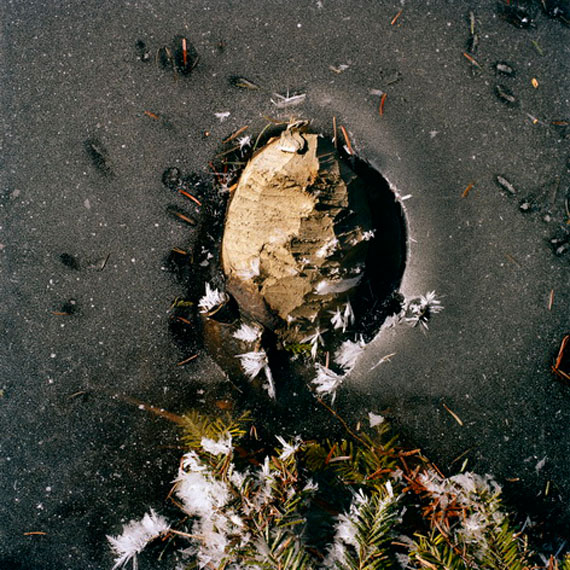
Normand Rajotte: "Empreintes" / Alfred Ehrhardt: "Tierspuren"
Ausstellung: 27. Februar bis 24. April 2016
Eröffnung: Freitag, 26. Februar, 19 Uhr
Eröffnungsrede: Dr. Christiane Stahl, Leiterin Alfred Ehrhardt Stiftung
Der kanadische Fotograf Normand Rajotte hat über viele Jahre hinweg das bewaldete Gebiet um den Mont Mégantic bei Québec mit der Kamera erkundet. Sein Hauptaugenmerk galt dabei nicht dem Wald als einer Landschaft, sondern vielmehr dem Boden und den dort zu entdeckenden Spuren, welche die Tiere des Waldes hinterließen. Die Serie Comme un murmure (Wie ein Flüstern) bezeugt die sich mit der Zeit entwickelnde Vertrautheit zwischen Fotograf und Natur, in die er sich während seiner Streifzüge regelrecht hinein versenkt. Insbesondere jene Aufnahmen von Tierspuren im feuchten Untergrund erinnern an die bisher nur wenig bekannten und nun erstmals gezeigten Fotografien von Spuren verschiedener Meeresbewohner, die Alfred Ehrhardt zwischen 1933 und 1936 in der Wattregion festhielt. Die Ausstellung Normand Rajotte: Empreintes / Alfred Ehrhardt: Tierspuren zeigt eine Gegenüberstellung der Arbeiten von Alfred Ehrhardt und Normand Rajotte, die sich beide den Oberflächenstrukturen des Grundes und den dort eingeschriebenen Zeichen tierischen Lebens widmen.
Sowohl Normand Rajotte als auch Alfred Ehrhardt sind Wanderer in der Natur – ob in der Dichte des Waldes oder der Weite des Wattenmeeres. Fährtensuchern und Spurenlesern gleich durchstreifen sie das immer gleiche Gebiet, stoßen auf Tierspuren und verfolgen sie mit ihrer Kamera, die auf den Boden gerichtet festhält, was sich ihnen dort in Nahsicht zeigt. Im Bild gewinnen die Spuren, die sie einfangen, eine graphische Qualität. Wie gezeichnet wirken etwa das Geläuf eines Vogels oder die Bahnen eines Kojoten in Rajottes Schneebildern. Doch nicht immer sind es die physischen Abdrücke der Waldbewohner, die er aufspürt, auch von Bibern abgenagte Äste, in schlammigem Wasser schwimmende Kaulquappen oder eine spiralförmig ins Erdreich gegrabene Röhre werden in seinen Bildern zu Spuren, die das Leben auf und unter dem Waldgrund präsent werden lassen. Seine genaue Kenntnis des Gebiets erzeugt dabei eine Nähe, die sich in seinen Bildern ausdrückt und uns einen intimen Einblick in die Natur gewähren lässt. In Ehrhardts Aufnahmen treten neben die rhythmische Formung des Wattbodens, entstanden im Rhythmus der Gezeiten, Spuren von Möwen, Seehunden und Wattwürmern, deren Strukturen teils rätselhaft abstrakte Züge annehmen. In ihnen verbindet er die Strukturexperimente des Neuen Sehens mit seinem am Bauhaus geschulten Gespür für Komposition, Materialbeschaffenheit und Abstraktion.
Von Beginn an wurde die Fotografie selbst als Index oder Spur der Wirklichkeit verstanden, als "Emanation des vergangenen Wirklichen" (Roland Barthes). So lässt sie Abwesendes anwesend erscheinen, wie auch die Spur eine vergangene Gegenwart präsent werden lässt. Sie verweist auf etwas Fernliegendes, das in ihr aufscheint und nah wirkt. Darin ist ihr auch etwas Rätselhaftes, gar Unheimliches eigen sowie eine Melancholie, die jedes Erinnerungsbild begleitet. In ihren Fotografien erschließen Normand Rajotte und Alfred Ehrhardt eine Bildwelt, die sonst im Verborgenen liegt, sich uns nun aber öffnet und sichtbar wird.
NORMAND RAJOTTE begann als Autodidakt seine fotografische Arbeit Mitte der 1970er Jahre. In Quebec entstand in dieser Zeit eine fotografische Richtung, die sich die ästhetische Erneuerung der dokumentarischen Straßenfotografie zum Ziel setzte. Seit Anfang der 80er Jahre widmet er sich gezielt der Landschafts- und Naturfotografie, mit der er in zahlreichen internationalen Einzel- und Gruppenausstellungen vertreten war. Er lebt in Montreal und Estrie.
ALFRED EHRHARDT (1901-1984) war Organist, Chorleiter, Komponist, Maler und Kunstpädagoge, bevor er Fotograf wurde. Nach einem Aufenthalt am Dessauer Bauhaus 1928/29, wo er bei Josef Albers studierte und bei Wassily Kandinsky und Oskar Schlemmer hospitierte, leitete er an der Landeskunstschule Hamburg den ersten Vorkurs für Materialkunde außerhalb des Bauhauses. Erst nach der Entlassung aus dem Hochschuldienst durch die Nationalsozialisten 1933 wandte er sich der Fotografie und dem Film zu. Im vorgelagerten Watt zwischen den Inseln Scharhörn und Neuwerk entdeckte er die Besonderheiten dieser wechselvollen Meereslandschaft.
Das Buch Comme un murmure / Like a Whisper erscheint im Kehrer Verlag, mit einem Text von Alexis Desgagnés, Festeinband, 20 x 24 cm, 68 Seiten, 46 Farbabb., Englisch/Französisch, 2016.�
